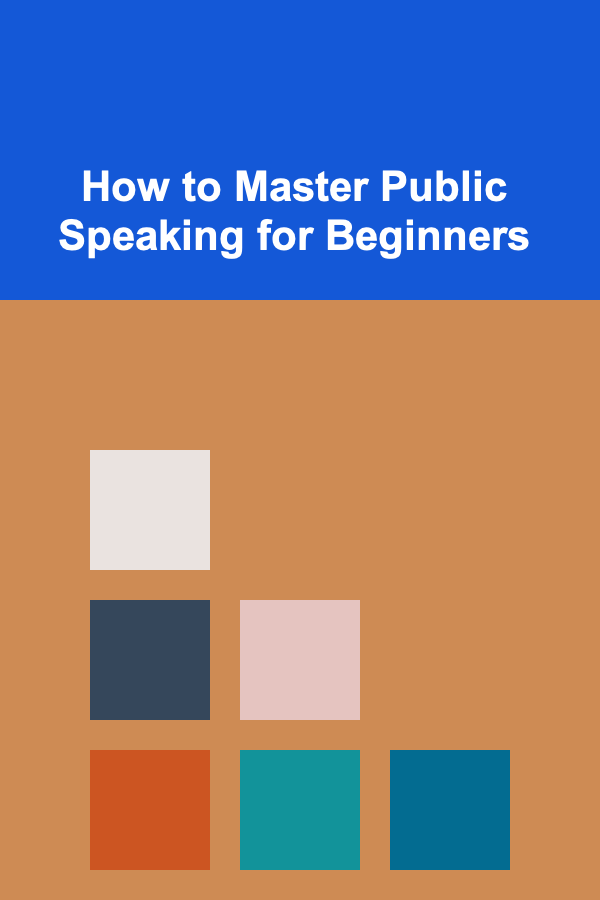
How To Appreciate the Nuances of Traditional Irish Music
ebook include PDF & Audio bundle (Micro Guide)
$12.99$6.99
Limited Time Offer! Order within the next:

Irish music, with its rich history and deep cultural roots, offers a unique musical experience that can captivate both newcomers and long-time aficionados. While at first glance it might seem like simple folk tunes, traditional Irish music is much more than meets the ear. Its intricate rhythms, historical significance, and emotional depth make it an art form worth diving into. To truly appreciate its nuances, one must explore its origins, instruments, forms, and cultural context, understanding how Irish music has evolved and continues to resonate with audiences worldwide.
The Origins of Traditional Irish Music
The roots of traditional Irish music trace back to the early Celts, who settled in Ireland over 2,500 years ago. These early settlers brought with them a distinctive musical tradition based on vocal chanting, drumming, and simple instruments. Over time, Irish music absorbed influences from invaders, settlers, and travelers, incorporating elements from Norse, English, and French music, but it managed to maintain its core character.
Historically, Irish music was passed down orally, with families and communities acting as preservers of tunes and traditions. Before the widespread use of written notation, musicians would learn by ear, contributing to the music's fluid and evolving nature. As the centuries passed, Irish music became associated with storytelling, the marking of important occasions, and the expression of Irish identity, especially during periods of colonization and struggle.
Throughout its history, traditional Irish music has been deeply intertwined with Ireland's political and social landscapes. It has served as a means of cultural resistance, a way to unite the Irish people, and an expression of joy and sorrow. The music's resilience in maintaining its distinctiveness, despite centuries of foreign influence and cultural suppression, speaks volumes about its enduring significance.
The Instruments of Traditional Irish Music
To truly appreciate the nuances of traditional Irish music, one must understand the instruments that bring it to life. The instruments used in Irish music are integral to its sound, and their distinctive tones and styles of playing have become iconic.
Tin Whistle
The tin whistle, often referred to as the penny whistle, is one of the most iconic instruments in Irish folk music. Despite its simple construction -- a metal tube with six finger holes -- the tin whistle can produce a wide range of emotional expressions. It is particularly known for its sweet, clear sound and is often used for playing melodies.
The tin whistle's portability and ease of learning make it a popular instrument among beginner musicians, but its subtle nuances can be difficult to master. A skilled tin whistle player can bring out a wealth of emotion through the breathy, expressive quality of the instrument.
Uilleann Pipes
Perhaps the most distinctive of all Irish instruments, the uilleann pipes are a type of bagpipe with a sweet, mellow sound. Unlike the Scottish Highland bagpipes, which are blown by the mouth, the uilleann pipes are powered by a bellows that the player operates with their arm. This allows the musician greater control over the air supply and results in a more refined and nuanced sound.
The uilleann pipes have a unique tonal quality that sets them apart from other bagpipes in the world. They are capable of playing both melody and harmony, making them a versatile instrument in Irish traditional music. The pipes' intricate, ornamented style of playing -- with slides, grace notes, and trills -- allows for expressive and emotive performances.
Fiddle
The fiddle holds a central place in Irish music. Though similar to the violin, the Irish fiddle has a distinct style of playing, characterized by its lively, fast-paced tunes. The instrument's flexibility allows the player to emphasize the rhythm and ornamentation that is so important in Irish music.
In Irish folk music, the fiddle is often used to convey a sense of celebration, with its quick bow strokes and lively sound accompanying jigs and reels. Yet, the fiddle can also produce deeply emotional and melancholy tunes, reflecting the sorrow and resilience embedded in Ireland's history. The variations in bowing technique, finger pressure, and vibrato make each fiddler's performance unique.
Accordion and Concertina
Both the accordion and the concertina are common in Irish traditional music, especially in dance settings. These free-reed instruments are capable of producing a wide range of tones, from bright and sharp to deep and resonant, depending on how they are played. The accordion is often used to accompany melodies played by other instruments, adding fullness to the sound, while the concertina is more often used for solo performances.
The concertina's relatively small size and the accordion's versatility make them ideal for the fast-paced, rhythmic nature of Irish dance tunes. The two instruments also complement each other beautifully in ensembles, as their contrasting sounds allow for complex arrangements.
Bodhrán
The bodhrán is a traditional Irish drum that is often used in folk ensembles. Played with a single stick, the bodhrán is primarily used to maintain rhythm, but it can also add a percussive, almost melodic quality to the music. The way the drum is struck, the angle at which the stick is held, and the use of the player's other hand to mute or resonate the drumhead all contribute to the wide range of sounds a bodhrán can produce.
The bodhrán is an instrument that has to be felt as much as it is heard. Its role in Irish music is to drive the rhythm forward, supporting the melody with a steady, pulsating beat. When played skillfully, the bodhrán can transform an ordinary piece of music into an energetic and deeply rhythmical experience.
Styles of Irish Music
Traditional Irish music comes in a variety of forms, each with its own rhythm, pace, and emotional tone. To appreciate the nuances of the music, one must explore the different styles and their cultural significance.
Jigs
Jigs are perhaps the most well-known type of Irish dance music. They are characterized by their 6/8 time signature, which gives them a lively, bouncy rhythm. The jig is often associated with happy occasions, and its fast-paced rhythm is ideal for energetic dancing. There are many variations of jigs, ranging from the simple and straightforward to more complex and ornamented versions.
The rhythms in a jig create a distinctive "skip" feeling, and skilled musicians will embellish the melody with grace notes, slides, and rolls to bring additional life to the performance. The energy of a jig can vary from exuberant and fast to more graceful and measured, depending on the context in which it is played.
Reels
Reels are another prominent form of Irish music, often used for both dancing and listening. Like jigs, reels are fast-paced but have a 4/4 time signature, creating a more driving, propulsive rhythm. Reels are characterized by their straight-forward, even rhythms, and they are typically more suited to complex ornamentation and rapid tempo.
The lively nature of a reel makes it an essential component of traditional Irish music sessions, where musicians come together to play in unison. As with jigs, the interpretation of reels can vary greatly depending on the performer's skill and personal style.
Hornpipes
The hornpipe is another rhythmically complex type of tune, often associated with slower, more stately dancing. It has a 4/4 time signature, but its rhythm is uneven, with a "long-short" pattern that gives it a more syncopated feel. Hornpipes are often used in Irish music to add variety and contrast to a set of jigs and reels, offering a slower-paced yet still energetic feel.
In many cases, the hornpipe's slower tempo allows for greater emotional expression, with musicians using dynamics and ornamentation to evoke a range of feelings from melancholy to joy.
Slow Airs
Unlike the fast-paced dance tunes, slow airs are reflective and often melancholic pieces of music. These melodies are typically played at a slower tempo, with an emphasis on phrasing, expression, and emotional depth. Slow airs are often associated with important moments in Irish history, such as funerals or memorials, and they provide an opportunity for musicians to convey deep emotion.
The ability to interpret a slow air is a hallmark of a skilled Irish musician. Subtle nuances such as phrasing, rubato, and vibrato allow the performer to express personal emotion and connect with the listener on a profound level.
The Role of Ornamentation in Irish Music
One of the defining features of Irish traditional music is ornamentation -- the use of small decorative flourishes to embellish the melody. Ornamentation serves to add complexity, depth, and personal flair to a piece of music, and it is an essential skill for any Irish musician.
Grace Notes
Grace notes are one of the most common forms of ornamentation in Irish music. These are quick, extra notes that are played just before the main note. They create a sense of "flourish" or excitement, adding rhythm and complexity to the melody. Grace notes can be executed with a quick flick of the finger on the fiddle or a slight breath on the whistle, and their use is often what distinguishes a skilled player from an amateur.
Rolls and Trills
In addition to grace notes, rolls and trills are common techniques in Irish music. A roll is a rapid alternation between the main note and its neighboring notes, creating a "rolling" effect. Trills, often performed on instruments like the flute or fiddle, involve alternating between two notes to create a shimmering sound.
These techniques are central to the distinctive ornamentation of Irish music and can dramatically alter the mood or character of a tune, transforming a simple melody into something more intricate and expressive.
How to Listen to Traditional Irish Music
To truly appreciate the nuances of traditional Irish music, listeners must approach it with an open mind and a deep appreciation for its cultural and historical context. Here are a few tips for engaging with Irish music:
- Listen Actively: Pay attention to the different layers of sound -- the interplay between the rhythm section and the melody, the intricate ornamentation, and the tonal qualities of the instruments.
- Explore the Stories: Many Irish songs tell stories, whether about love, loss, or historical events. Understanding the lyrics (if applicable) or the context behind the music can deepen your appreciation.
- Attend Live Sessions: There's nothing quite like experiencing Irish music in a live setting. The energy of a traditional Irish music session, where musicians come together to play impromptu sets, offers a firsthand look at the spontaneity and vibrancy of the tradition.
- Learn About the Musicians: Irish musicians often have a personal connection to the music they play, passed down through generations. Understanding their background and training can give insight into their interpretation of the music.
Conclusion
Traditional Irish music is a multifaceted art form, filled with history, emotion, and cultural significance. By understanding its origins, instruments, styles, and nuances, listeners can gain a deeper appreciation for this vibrant musical tradition. Whether you are enjoying a lively jig at a festival or listening to a slow air in a quiet moment, Irish music has the power to transport you to another time and place, resonating with the spirit of the Irish people and their enduring cultural heritage.

How to Mix Patterns and Textures on a Budget
Read More
How to Use Labels Effectively for Meal Prep Containers
Read More
How to Master Public Speaking for Beginners
Read More
How to Design a Vertical Herb Garden
Read More
Choosing the Right Cable Cutters for Clean Cable Trims
Read More
10 Tips for Nurses Returning to Work After a Break
Read MoreOther Products

How to Mix Patterns and Textures on a Budget
Read More
How to Use Labels Effectively for Meal Prep Containers
Read More
How to Master Public Speaking for Beginners
Read More
How to Design a Vertical Herb Garden
Read More
Choosing the Right Cable Cutters for Clean Cable Trims
Read More